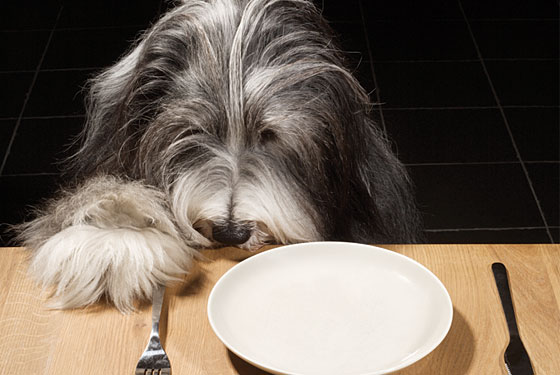The answer is likely to be, yes. But around this answer we usually see that along with their age, our pets’ lifestyles have changed. Just as in human behavior, there are things you can do to stave off some of the challenges of aging, and some of this is very specifically related to food. Additionally, there are conditions and diseases that affect aging cats and dogs; and in these, we can see some ways that changing foods, changing habits around eating, or adding supplements might help.
First and foremost, and equally important in both cats and dogs, is the matter of weight. Obesity in pets can cause all manner of problems – from joint pain and difficulty in movement (which can become its own spiral of inactivity) to constipation, and the more serious diabetes, kidney, liver or heart diseases. You are in great control here, as you feed and exercise your pets. So their health is very much in your hands. Keep their weight down with a program of exercise and reduced portions of just the right foods and you will buy your pet years of health and comfort.
While there is no evidence that changing the formula of your cat’s food is beneficial to their basic aging challenges, portion control is essential if your cat has moved into a more comfy lifestyle. Keep his calories down and his energy up.
Make sure that exercise is part of your daily commitment to your pets. Dogs, of course, can and must walk and run and fetch and play, but we often forget that cats, especially indoor CityPet cats, need exercise too. Try to find games around ‘prey’ play for your cats. Let them chase and pounce a toy on a string, or follow a light you move to capture their attention. Or hide a small treat in a ball and let them work to get it out. Most of all, keep them moving as long as possible, at least a couple of times a day.
For dogs, higher fiber, lower-calorie food may help both their gastrointestinal issues and keep their weight down. Many dog food brands offer senior food formulations. But ask your veterinarian for advice. Depending on the other challenges your dog may be facing, your vet may suggest a particular brand or an alternative to commercial food.
Snacks can be motivational for play, training or simply pleasure. But I’d suggest changing the high-cal, high-sodium packaged treats for natural choices, like pieces of carrot and slices of apple. Remember, stay away from grapes and raisons. Even small amounts can be dangerously toxic to dogs.
Supplements may be indicated, like glucosamine and chondroitin sulfate, for issues of joint pain in dogs. But make sure you buy a veterinary formulation, not one for humans. And – don’t ever give a dog supplement to a cat without your vet’s direction.
Sometimes the challenges with food are not about eating too much, but not eating enough. First of all, a pet who seems to have lost his appetite should be seen quickly by your vet to rule out health problems from tooth or gum disease to cancer. Once you know that your dog or cat is fine, you can experiment with changing their food to make it more appetizing to your pet; adding in a little broth or tuna or chicken.
Some of my clients swear that cooking for their dog helps to stimulate his appetite because he smells the appetizing aromas wafting through the house. And I can imagine that a meal of lean lamb and rice or chicken and barley might be especially enticing. I understand from other clients that some cats like their food warmed. Don’t be afraid to try things within reasonable limits, of course. Caviar might be over the top in expense but also in sodium, so keep your head.
Maintaining stable and balanced nutrition is one of the most important things we can do for our pets. Make your veterinarian part of that process. Invite their input if you suspect that your dog or cat is moving to a different stage of development. You will get advice that will be perfectly suited to your animal’s needs. I can’t imagine anything more valuable.


Recent Comments